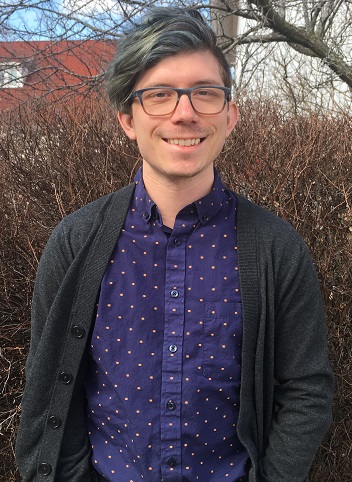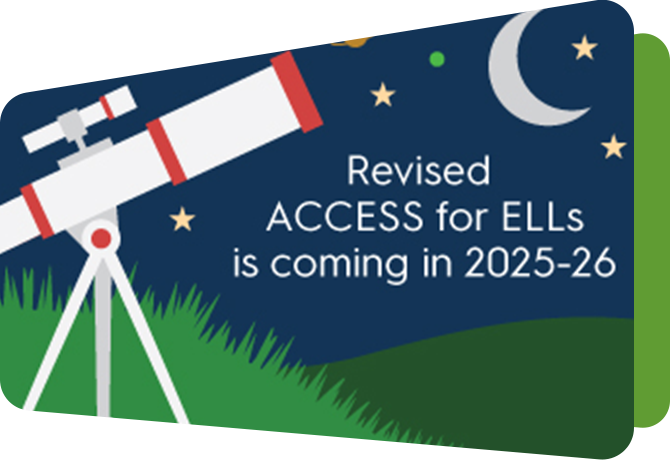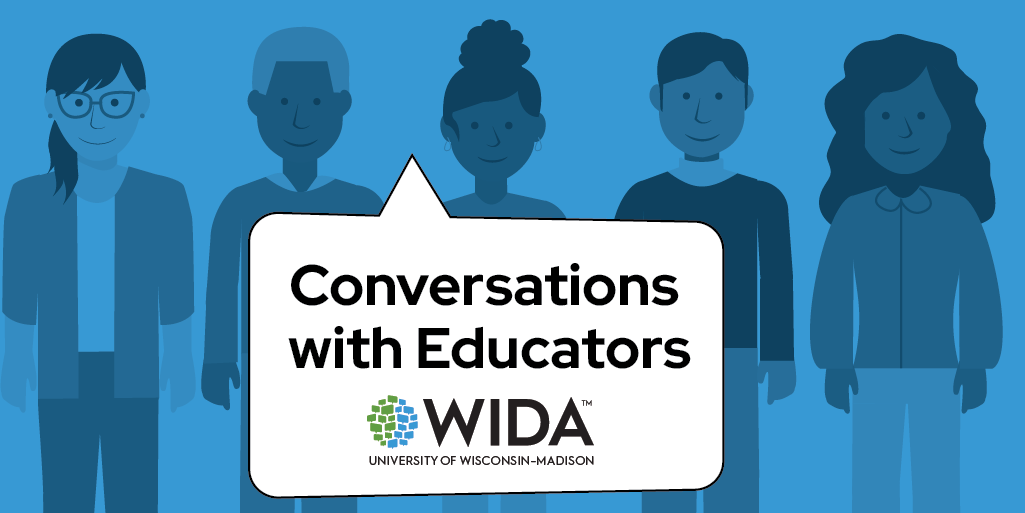April 2018 Featured Educator: Robb Freeman

Where do you teach? What grade(s)? How long have you been a teacher and how long have you been at your current school?
I teach Grades K-8 at Prairie Crossing Charter School (PCCS) in Grayslake, Illinois. I have been at PCCS for 5 years and it is my 4th year in my current role as an ESL Teacher. I started out as a substitute here and then was an Instructional Assistant before moving into my current role.
What is your class, school and district like? Can you tell me a little about its location, size and about the composition of the student body?
PCCS is a charter school that feeds from two school districts that span 64 square miles. We have 432 students and 21 different languages spoken by the students and their families. Every year, our student body is growing more diverse, which is very exciting! My first year I had a dozen language learners and this year I am supporting 46 students.
Our school is situated in a unique setting in that we are part of a conservation subdivision. So right outside of the building is a lake and acres of open prairie grounds. We tap into this setting by having classroom gardens and by working with local environmental educators who help the students learn how to explore the area in a responsible way.
Why are you an educator? What do you love about your job? What frustrates you?
I have always wanted to be a teacher. When I was in high school, I had a French teacher who made learning so fun. I loved learning another language and learning about the cultures of various French-speaking places. I first became a certified French teacher but found that it is was difficult to find jobs in this area. I ended up volunteering with Haitian and refugee populations, leading conversation clubs and helping recent immigrants with their transition to the United States. I noticed that my love of teaching French carried over to teaching ESL; I really enjoyed supporting others learning another language. So I decided to pursue ESL Certification. It is funny, I started out wanting to teach French at the high school level and to work abroad. Now I am teaching ESL, with a majority of my caseload in K-2 in Illinois and love it!
I think it is so incredible to get to work with students from different cultures, who bring different language experiences. We learn so much from one another.
How have you helped the school and community embrace and learn about the cultures of your students?
I was first inspired by a WIDA training I attended at the Illinois Resource Center (IRC) Conference that focused on bringing culture to the foreground of schools. I came back and reached out to my students' families and formed a MPAC, which stands for Multicultural Parent Advisory Council. I know that the ESL classroom by its nature can be subtractive, so I wanted to bring families in, and provide a way to get their input and make sure that we are helping students hold onto their languages and cultures. We started talking and planning what we could do as a school to build cultural awareness.
The first event we held was a Diwali celebration. This is a celebration that crosses several religions and a few countries, so it was a wonderful opportunity to get families from different backgrounds to collaborate. We brought in Indian foods and parents taught traditional Diwali dances. Families helped kids create various projects associated with this celebration. The kids were so excited by this, and it really empowered my ELs to feel proud of being second generation immigrants. I often see students who are second generation struggle a bit with their identities, since they want to be more "American" and often push away their home culture. But I know, and my student families express, how valuable it is to maintain their home culture. Several of our families even had grandparents travel from India for the event because the students and their parents were so proud of this event.
Another event we held last year was Baba Marta, which is a Bulgarian holiday that marks the transition from winter to spring. We worked with our Bulgarian families to learn about how to celebrate this within the school. One tradition is that you wear a red and white bracelet (a martenitsa) and when you see the first tree bloom or a stork fly overhead, you are supposed to tie your bracelet to the tree for a good harvest. Since we wanted to respect our surroundings, we used wooden beads and organic cotton for the bracelets. Our environmental educators led nature walks and helped students look for signs of spring on campus. Also, at PCCS we do something called "Farm to Table" in which we bring in a local chef to the school and use produce from our classroom gardens along with vegetables from local farm down the road. As an extension of Baba Marta, we had a Bulgarian themed "Farm to Table" for the students.
This year, we did a celebration for the Chinese New Year in which we had a Lion Dance with professional acrobats and musicians. We brought in one of my student's parents, who are local Chinese chefs, to teach families how to make dumplings. We try to tie these events into our curriculum, so MPAC put on a Thanksgiving literacy night and potluck where families brought in dishes representing their heritages and learned about Chuseok, a Korean Thanksgiving.
Building bridges with families is a two-way street. We want to do more than just have families come to us. For example, some of the staff and I volunteered at a local Sikh temple and we served lunch to the whole congregation. It was important for the students to see not only me or their homeroom teachers, but also other staff members from the school, supporting their community. This has helped not only strengthen the home-school connection, but it has also made students feel more comfortable to embrace themselves and all the cultures and communities they are a part of, in and out of school. I have seen students open up and share aspects of their culture that they used to shy away from addressing. And their classmates are interested in learning about their peers. It has helped to create a safe space for students.
What is your approach in your classroom/school towards multilingual learners? What techniques/strategies have you found to be most effective in teaching language learners?
When I first started, I was just doing pull-out language support. This was stressful for students because they worried about what they were missing out on in class. At a past WIDA conference, I was able to attend a pre-conference workshop led by Andrea Honigsfeld that focused on supporting ELLs through the collaborative instructional cycle. My colleagues and I learned so many strategies that would allow us to support students in their classes and how we can effectively teach together so that students have the language supports they need to access the learning in the classroom. I received many ideas about how to work with content teachers so that they understand students' language goals and the purpose of my support. Co-teaching has really helped lessen the disruption to the content learning for students, and this approach has helped teachers maintain their relationship with the students.
Since I am the only ESL teacher at my school, I am part of the Student Services Team, which I have now realized isn't the case in most schools. I feel that getting to work so closely with the Student Services department has been so beneficial for our students, because when we have students who are dual identified or who are in the referral process, we are able to work together to create the most inclusive and supportive plans for each student.
WIDA opened my eyes as to how other ESL departments work and how we are all in it together. It has helped me realize the power of collaboration and how important it is for our work, and for empowering our students and families.





